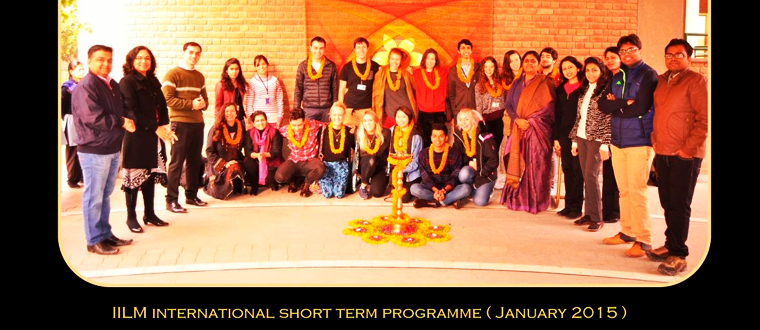Starting your own business and being your own boss can be amazingly satisfying, but it’s s not that simple as it sounds. There are number of fundamental issues that one needs to take care before going ahead with a start up. Here are some important factors you need to consider before jumping into a new business:
► Bright Idea – One of the essentials for start ups is to have an idea.Now, it is worth noting that one needs to also focus on the newness of the idea. Evaluate whether you have a brilliant & original idea, which would be beneficial to society and solves a problem. In order to ensure that your idea is innovative, research your idea thoroughly and see if other people are already using the same concept/idea to make money. If it is already in use by people, do not lose hope. Simply, try to find a different or new approach to the idea.Innovative ideas are key to success.For instance, company called ZIPDEAL ranked number 8th in 2014 in the list of top innovative companies in the world wherein Google stood at number 1.Now, ZIPDEAL used a brilliant idea of making business from missed call and awarded number 8th position “For turning a consumer cheat into an asset”
► Blue print – Once you are done with your innovative idea, the next step is to give it a concluding shape in the form of “Business Plan” . As a business plan helps you to understand business objectives, identify interdependencies, set your priorities , ease the process of tracking results and also it helps you to be proactive and not reactive to business. Thus , a business plan helps you to become a better entrepreneur.
► Legal structure of business – Think about “Which legal structure makes most sense”. There are pros and cons of almost all the forms of business entities be it is company, partnership or sole proprietorship. While deciding about the type of business entity consider the factors such as
• Legal liability involved
• Tax implications
• Flexibility
• Cost of administration etc
► Team – Team stands for more than one person. You should try to start the business with at-least two members .Also, start up businesses should review their team and analyse whether the team is competent enough to bring the different domains expertise like Technology, Human resources, Marketing, Production, Finance etc. Further, a business may be great as a team but try to review whether the team will be able to execute the venture. So, concentrate on the Execution capability of the team.
► Identify Target Market – The more you understand your customer, higher are the chances for the success of the business. Therefore, you need to identify your customer/target market .Identify
• Whether the market wants what you are offering(Market viability)
• Understand the competitors marketing strategy
• Do market research and study your target customer
• Understand market competition .Focus on gap between demand and supply
► Creating Buzz – For a start up company, creating a buzz in the market through a costly promotion campaign may not be easy. Use more creative ways to get the attention in the market at zero or minimum cost. “For example ,UNICEF used Guerrilla marketing campaign which created huge buzz in the street and actually returned great results. A vending machine was set up on the streets advertising dirty water. Instead of different varieties of soda, it was actually different varieties of diseases found in dirty water. Stunning! It is even more interesting that people would actually put in a $1 (which ultimately was donated to the cause) to see what came out” (Source- http://www.creativeguerrillamarketing.com).So,if you use some creativity ,it is possible to launch an effective and low cost promotional campaign. Some of the options can be
• WOM – Word of mouth publicity through family, friends and relatives
• Linkedin – Make a Linkedin profile and join appropriate groups
• Directory – Get your business registered in a business directory most likely online like indiamart, Justdial,Ask me etc
• “.com”– Create a website and display attractive graphics and pictures on the same
• Blogs – Add blog to your website to post pretty images of your products or other engaging materials
► Financing – Fund raising is vital for a new business”.If fund raising is done in perfect way it can lead to lucrative partnership with Angel investors & venture capitalist and if not done perfectly it can be fatal for new enterprise. There are a number of ways in which a start up business can raise funds, some of the important ones are
• Use Family and friends– Family and friends can be used as a source of financing. But make sure that there is proper lending agreement between you and the family/friends .A number of small businesses use this method of financing so don’t underestimate this.
• Crowd funding– There are various crowd funding sites where you can float your business idea and arrange finance for your idea. In case of crowd funding, the project is funded by a large number of public normally via internet.The crowdfunding model consists of mainly three participants: the project creator who proposes the idea , individuals who support the idea and a moderating organization (the “platform”) that brings the parties together to launch the idea .Some of the best crowd funding websites for small businesses include Kickstarter, Indiegogo, and Fundline.
• Bank Financing– People use bank finance as the most common way to raise fund for their business. Further, in India there are various schemes for getting bank finance for start ups
• Venture capital– Affluent Investors wish to invest their capital in businesses with long term growth prospects. Such a capital is termed as venture capital which can be a good source of finance for start ups.There are number of venture capitalist firms in India like Reliance Venture,
► Flexibility – Another important factor that needs to be considered by a start up is flexibility. This covers flexibility in terms of business idea or business goals, which some businesspersons find harder to achieve. It is important that you should be ready to alter your personal start-up dream if it doesn’t match reality.Many a times venture capitalist can give you suggestions for improvising your idea or goal. The successful ventures are normally the ones that can take their initial idea and alter it once, twice or thrice into a better version.At times ,business ideas fail as it lacks flexibility.
► Technology – Now a days, technology has an important role to play in the success of a business. Review your business plan to find out which technology will enable you to save time, save money, stay in control, make more sales and deliver a better service to your customers.Big business brand like L&T,Coca Cola, Pepsi etc spend a lot on technology/softwares.
► Compliance with state and central laws – One should ensure compliance with various legal and tax matters in order to lead a successful start up. Some of the compliances may relate to
• Compliance with companies act
• Tax Identification number
• PAN number
• VAT or service tax registration number
• Patent laws etc







